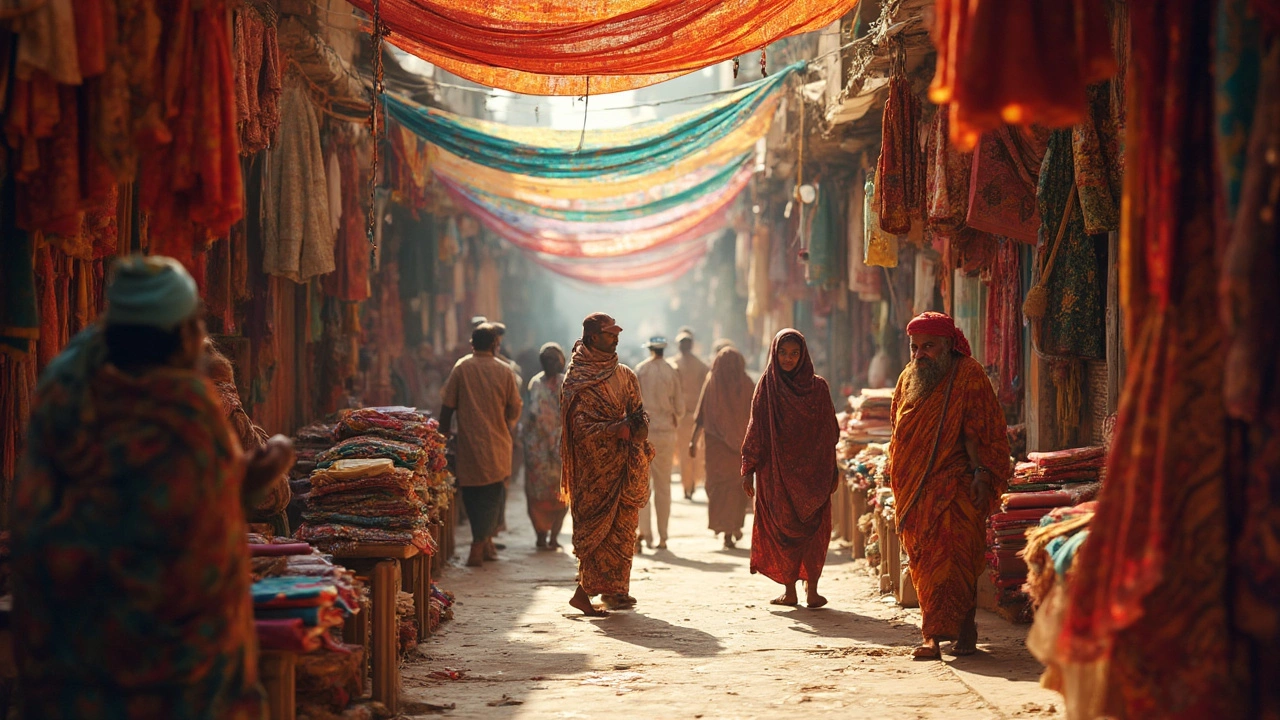- Top Manufacturing Business Opportunities to Thrive in 2025 Jan 1, 2025
- Gujarat Famous Cloth: The Story Behind India's Textile Powerhouse May 25, 2025
- Will Companies Pay for Ideas? Manufacturing Startup Insights Jun 3, 2025
- Top Car Brands Manufactured in India: The Complete 2025 Guide Aug 4, 2025
- Who is the King of Textiles? Apr 16, 2025
India's Textiles – What’s Hot, What’s Cheap, and What’s Coming
India’s textile world is a mix of age‑old hand‑loom art and high‑tech factories. If you’re curious about what makes Indian cloth special, you’re in the right spot. From silk in Varanasi to cotton in Gujarat, the country packs a huge range of fabrics that feed both local shoppers and global buyers.
Top Fabrics and Why They Cost More
Luxury fabrics in India aren’t just pricey because they’re rare. They cost more because of skilled artisans, special raw material, and a lot of time. Think of Kanchipuram silk – each thread is dyed by hand, the loom runs slow, and the designs are intricate. That’s why a single silk saree can hit the high price tag.
Other expensive textiles include Pashmina shawls from Kashmir and Banarasi brocades from Uttar Pradesh. Pashmina uses fine goat hair and is hand‑woven, while Banarasi brocades mix gold or silver threads with cotton, making each piece a work of art. If you’re looking to invest, these fabrics tend to hold value.
Where the Industry Grows Fast
Modern factories in Maharashtra and Tamil Nadu pump out millions of meters of cotton, polyester, and blended fabrics every year. These plants use automated looms, dye‑fixing machines, and computer‑controlled quality checks. The result? Faster production, lower cost, and the ability to meet big orders from overseas.
At the same time, the hand‑loom sector stays strong in states like West Bengal and Assam. Government schemes give cash help, training, and market access to weavers. That mix of old and new keeps India competitive on the world stage.
Exports are another big driver. In 2023, India shipped over $30 billion worth of textiles, with key markets in the US, EU, and Middle East. Clothing, home‑textiles, and technical fabrics (like medical gowns) are the top categories.
Putting sustainability into the mix is now a must. Brands are asking for organic cotton, low‑water dyes, and recyclable packaging. Indian producers who adopt these practices can charge a premium and win contracts with eco‑conscious buyers.
If you’re a buyer or a budding entrepreneur, start by figuring out which segment fits your goal. Want to sell high‑end garments? Look at silk, Pashmina, and hand‑loom brocades. Need bulk material for fast‑fashion? Turn to cotton and polyester mills in Gujarat or Tamil Nadu.
Before you commit, check a few basics: the supplier’s quality certificates, lead‑time reliability, and whether they follow fair‑trade rules. A quick visit to a local market or a video call with the factory can reveal a lot.
In short, India’s textile scene offers something for every budget and style. Whether you chase luxury, volume, or green production, the country has the resources and talent to deliver. Keep an eye on emerging trends like smart fabrics and digital printing – they’re shaping the next wave of Indian textiles.
Exploring India's Textile Hub: Unveiling the World Capital
- Aarav Sekhar
- Mar 26, 2025
Discover why India is often hailed as the textile capital of the world. This exploration dives into the historical significance, modern advancements, and economic impact of India's flourishing textile industry. With insights on major manufacturing hubs like Surat and Tiruppur, the piece also highlights challenges and forward-looking trends in sustainable practices. Whether you're an industry insider or a curious reader, this article sheds light on India's vital role in the global textile landscape.
